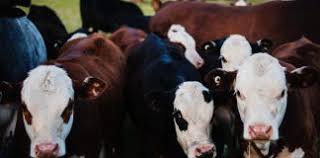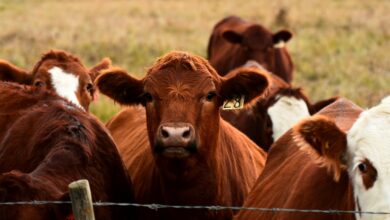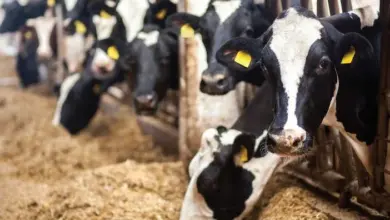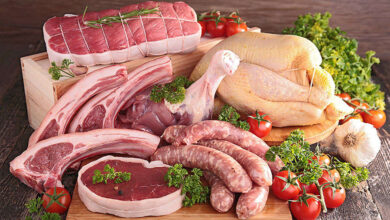Now is the time to buy red meat – if you can afford it

The global meat industry continues to feel covid-19’s impact as global lockdown measures complicate trade prospects. Economic growth estimates for 2020 have been lowered, and the impact on consumers will dampen demand for animal protein. Wide-spread closures of restaurants and food service outlets as well as a decline in tourism and travel would change protein demand for all forms of meat, and also impact on the type of cuts that will be demanded.
In fact, transport and shipping delays have also impacted world trade by clogging ports and reducing the supply of containers, at least in the short term. Full impacts are likely to continue to develop, however, the reaction of the livestock industry at all stages of the production and distribution chain is likely to affect potential supplies moving forward.
The South African cattle market is also no stranger to these covid-19 disruptions. The South African beef industry is also subject to changes as a result of growing challenges from the covid-19 pandemic.
“THESE ARE TIMES OF UNCERTAINTY AND MANY FEEDLOTS ARE NOT BUYING THE VOLUMES OF WEANER CALVES.”
The temporary closure of restaurants and the informal meat trade emerged as a threat to the industry during the 21-day initial South African national lockdown. Consumers bought in panic, and before the pandemic they bought huge amounts of stock. This included red meat, as home cooking became the new normal, with customers being unable to purchase cooked food and takeaways anywhere due to the lockdown ban.
As a result, prices recorded some strong gains. The panic buying brought about by the national lockdown announcement in March resulted in record sales and prices of red meat products for consumers as they stocked meat. This trend did however not last long. Consequently, April recorded the lowest sale volumes and prices for red meat.
These are times of uncertainty and many feedlots are not buying the volumes of weaner calves they usually purchase during this time in the season, because of the uncertainty about the overall direction of prices in the coming months.
The self-distancing protocols which South Africans are currently observing with the aim to reduce the spread of covid-19, has changed the way consumers spend their money. Consumers are now shifting their money to spend on “at-home” meals rather than eating out. This has reduced the demand for beef trimmings to a large scale, which plays a big part in the informal and formal food sector.
Consumers will surely benefit from these lower prices, however at the moment the already cash–strapped consumer isn’t able to fully enjoy this reduction in red meat prices.
Consumers benefit from low meat prices
On the local market, beef prices have recently been under pressure due to softer demand and the current lockdown restrictions. This is in line with the weaning season that is currently underway, which is characterized by oversupply of weaners in the market, thereby adding pressure to prices.
Farmers not being able to sell their livestock creates not only a cash flow problem, but also creates a logistical backup as they may not have physical space for new feeder cattle that were intended to replace the cattle that could not be sold.
Unlike other commodities that can simply be stored, animals continuously need to be fed and taken care of, therefore creating ongoing expenses for producers, especially with the current higher maize and soybean prices. This creates an uncertainty going into the winter period, which is associated with weaker demand.
In April 2020, the average class A beef prices declined month on month by 4% to R45.32, whilst the average class C beef prices followed the same trend and recorded a 5% drop month on month to R38.77. The average weaner calf prices declined by 11% month of month to R27.91. The average yellow maize spot prices meanwhile recorded some 5% gains during the same period reaching R2 785 per tonne, largely supported by the recent weakening of the South African Rand.
Challenging time for beef producers
The world economic disruptions associated with the covid-19 pandemic is expected to lead to major disruptions in both the global and domestic production, consumption and trade patterns of beef products. This will require that beef producers adjust their production plans.
The International Monetary Forum (IMF) has warned that it expects the global economy to suffer the worst blow since the 1930s, with most countries’ economies set to be at least 5% smaller, even after recovering from the coronavirus pandemic. As a result, it can be expected that consumers may switch to less expensive protein sources and adjust dining patterns to reflect the negative growths. Depressed restaurant traffic is expected to negatively impact beef demand prospects.
“THE RECOVERY OF THE RED MEAT INDUSTRY WILL DEPEND ON THE RECOVERY OF CONSUMERS’ DISPOSABLE INCOMES OVER TIME.”
This is a tough time for the local industry, as the whole value chain is uncertain about what will happen in the market in the short term and beyond the recovery from the pandemic. The bleak South African economy further creates uncertainty in terms of jobs, with a lot of companies already struggling and some shutting down. A resultant decline in consumer spending and product choice is highly likely.
The recovery of the red meat industry will depend on the recovery of consumers’ disposable incomes over time. As the lockdown measures ease and stocks starts to flow due to lower priced red meat products, it is expected that the price of red meat will gradually be supported. These are indeed tough times for an industry that is still trying to recover from negative impacts of the recent foot and mouth disease outbreak.







